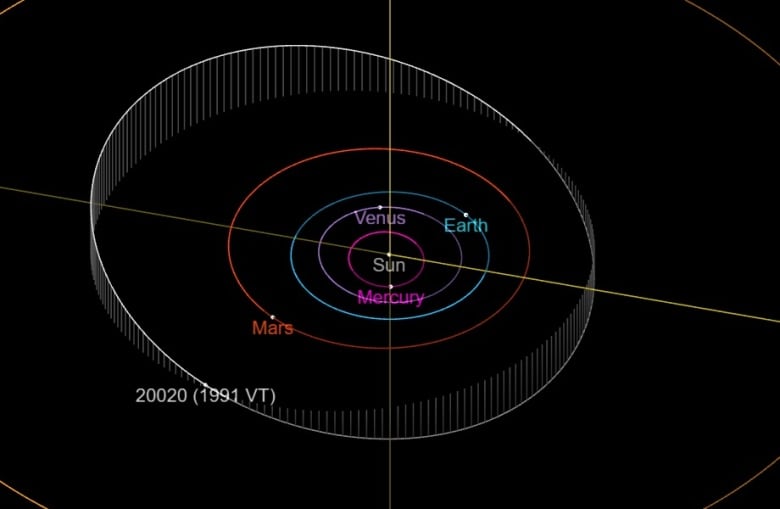Three New Brunswickers are enjoying an astronomical surprise: an asteroid has been named after them.
It’s called Mipach — using the first two letters from the names of Saint Johners Mike Powell, Paul Owen and Chris Curwin.
“I saw the email and the other two guys hadn’t seen it yet. So I was frantically on the phone and messaging them back and forth, getting them to take a look. So it was just overwhelming,” Curwin said.
The asteroid is 6.37 kilometres in diameter and resides in the main belt, between the orbit of Mars and Jupiter, he said. It was discovered in 1991.

Owen said when Curwin told him and Powell about Mipach, he thought it was a joke at first. But after he processed the information, he said he was stunned.
“I’m still letting it sink in. So I guess … I haven’t absorbed it all yet,” Owen said.
The process of naming minor planets, which includes asteroids and comets, is done by a working group within the International Astronomical Union called Small Bodies Nomenclature.
Gareth Williams, an astronomer based in Massachusetts and the secretary of the working group, said about every three weeks more names are revealed, and it is the working group’s job to approve those names.

He said names for these minor planets are generally suggested by those credited with the discovery of the object.
Then, the 11 voting members in the group will approve or deny the suggestion.
But sometimes, those names are suggested by outside sources, as in the case of Mipach, which Williams said was suggested by Canadian astronomer Peter Jedicke, who proposed a number of names, primarily after Canadian amateur astronomers.
The names of minor planets are given for identification purposes, said Williams, not commemoration. But he said he’s heard from amateur astronomers who are very happy to have their name attached to a minor planet.

Williams said that amateur astronomers are people who work in the field, usually in an unpaid capacity, but that doesn’t necessarily mean they’re unprofessional.
“Amateur has a negative connotation, except in astronomy, where good amateurs can produce better results than some professionals,” he said.
Live — from Saint John
A bulletin from the International Astronomical Union mentions the three amateur astronomers and their program, the Sunday Night Astronomy Show, broadcast live from the Saint John Astronomy Club on Rogers TV and YouTube.
Curwin said the program started as a way to share lives views of the night sky, but in the last three years there have only been four clear Sunday nights, so the group quickly realized that wasn’t going to work.
So they started talking about telescopes and getting into astronomy as a hobby and it grew from there.
Curwin said he’s always been interested in astronomy, starting when he was s a kid, lying on the grass, looking at the stars. He remembers using a telescope one night to gaze at the Andromeda Galaxy, but when he looked around, nobody else was there to experience it, which made him want to share it.
“It’s that whole thing —is to try to think of the fact that that’s how tiny we really are in this whole vast scheme of things, you know, we live 100 years and it takes, you know, Pluto 250 years to orbit around the sun once,” he said.

Owen has long been involved with showing off “night sky treasures,” and served with the New Brunswick chapter of the Royal Astronomical Society of Canada up until this year, where he would host people for a weekend in the park to admire the sky.
But he said he never would have imagined being one-third of an asteroid’s namesake.
“We did the show and we didn’t even know how that would go. It’s just something that we do because we’re all passionate about astronomy,” said Owen.
“So it’s kind of morphed into what it is and and to receive this designation because of it, it’s certainly an honour.”
